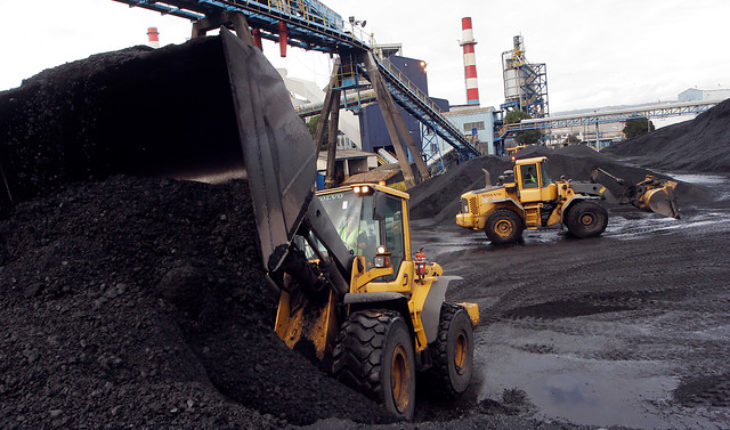The last climate summit (COP24) was recognized worldwide as a failure. The difficulty in reaching multilateral agreements, driven by the United States, in order not to adopt more determined or ambitious climatic action, led to the member countries that met in Poland postponing this year, in which the COP25 is carried out, a Fundamental discussion: The exchange of greenhouse gas emission quotas between countries, known as the carbon market.
To the instability of this discussion in the COP25 – of which Chile will be the organising country – is added another even more transcendental discussion that was not resolved in Poland, although it was discussed for hours, becoming one of the hardest battles of the last summit of the CLI Ma. The debate that was not agreed had to do with the final declaration of the Summit, called “The decision”, an instance which, having a political character, is seen as the roadmap to confront global warming and that, on that occasion Should reflect the specific will of the 200 Member States to present plans for more radical greenhouse gas emission cuts.
To achieve this goal, it was substantive for countries to value the entire dimension of the report prepared by the IPCC (Intergovernmental Panel on Climate Change), which concluded that the time to stop the climatic collapse He was practically exhausted.
To achieve agreements of this size, constitutes the real challenge that Chile has as organising country, this summit being the last before the date fixed for the entry into force of the measures of the Paris Agreement. And, incidentally, a great opportunity, explained environmental experts, for president Sebastián Piñera to exercise leadership in the international concert with a theme that concerns the whole planet and for which the host, or Chile, should show actions Determined to serve as an example.
Last March, at the launch of the COP25 in La Moneda, the head of state said that Chile will never build coal-fired thermo-electrics and promised to move towards the decarbonization of our energy matrix.
The decarbonization Plan should be officialized during the next few days by the government, however, the schedule of closing of coal-fired thermoelectrics, which has transpired this week, contains data just shy that do not say relationship with the vehemence Of the announcements made at the ceremony in the currency, where Piñera even pointed out that Chile could come in the medium term to become the first country to be carbon neutral.
According to the versions that have been known, the plan agreed at the table installed between the companies of the sector and the Government would offer to eliminate only 1,000 MW before 2030. This means that, of the current 28 coal-fired plants in the electric park, only 8 would leave the system in the next 10 years.
If this data is confirmed, for environmental organizations such as sustainable Chile, the decarbonization Plan of the executive is absolutely insufficient to descarbonizar the energy matrix and to fulfil, in passing, the plans of the Paris agreement, which will be Center of the discussion in Santiago, in next December.
For this organization, it is necessary to take more concrete steps, given that “in the context of the climate crisis and its great vulnerability to this phenomenon, Chile must concretize an accelerated process of decarbonization, in accordance with what was proposed by the UN, which It urges the need to reduce 45% of CO2 emissions to 2030, and to be carbon neutral in 2050. ”
According to sustainable Chile, it is perfectly feasible to accelerate the process of decarbonization in the country and to have closed the year 2030 the entire generator park based on coal, whose capacity is 5,540 MW.
In environmental terms, the organization stresses that the benefits of a decarbonization scenario at 2030 are evident, because this goal “would represent a reduction in CO2 emissions of 30 million tons per year”.
To justify its proposal, the organization commissioned KAS Ingeniería The prospective study of the decarbonization of the electric Matrix to the year 2030 to support in technical terms the decarbonization scenario.
The numbers endorse the plan. “Considering the costs of operation and investment in generation, and the costs of investment in transmission, a scenario of operation without coal units to the year 2030, would be only 2,414 MUSD more expensive than on the stage without decarbonization. 90% of total investments correspond to renewable energy plants and 10% to additional extensions of the national transmission system. However, for this period, there is a savings for lower operating costs of 70%, which implies that Descarbonizar only costs 30% of the largest investment required for the replacement of the plants in the year 2030, “says the study.
In addition, the report states that “for the period 2022-2039, there would be a decrease of 396 million tonnes of CO2, equivalent to an average of 22 million tonnes per annum. That is, the average unit cost of reduction reaches 6.1 USD/Ton.
The prospective study of the decarbonization of the electric Matrix to the year 2030, indicates that the 3,600 MW of average power of generation to coal can be replaced mainly by renewable technologies of generation: solar photovoltaic, wind, solar Photovoltaics with accumulation (e.g. batteries), solar thermals of concentration and/or accumulation. Of which 6,940 MW should be built in new works, which were valued at 15,407,000,000 dollars.
With respect to the date of departure of the coal-fired plants, the 2038 decarbonization calendar used by the coordinator in its report “Operation and Development Study of SEN without coal-fired plants” was considered as a reference, but accelerated to the year 2030.
In addition, a comparative analysis was conducted between different generation technologies and it was concluded that all clean technologies (with their current cost and the low expected to have in the future), are economically more competitive than the generation from Coal.
Finally, in relation to the extension of the transmission required for the units that replace the generation with coal and to avoid the bottlenecks and decouplings economic in the electrical system, the study, recommends to increase the capacity of the system HVDC Kimal-Maitencillo to one of 4,000 MW and HVDC Maitencillo-Lo Aguirre of 6,000 MW, in addition to constructing additional lines mainly of 220kV, a line of 500 kV between Kimal and Lagunas, and various systems of flow control in 220 kV in the National electrical system, all This requires an additional investment of the order of 820 MUSD associated with decarbonization.





